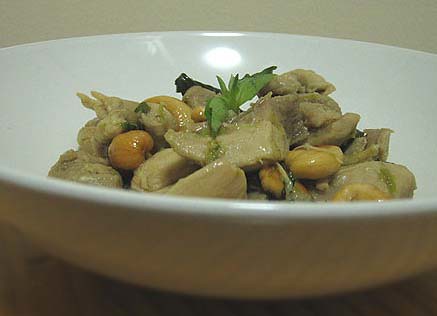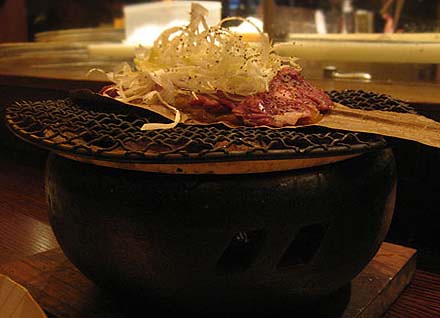There have been some wonderful sugar snap peas in Chinatown for less than $2 a pound. I imagined making some sort of crunchy salad with them so I stopped by my butcher on Mott to buy a nicely-red beef flank steak to match. After searing the steak, the sauce caramelized and I ended up throwing the snap peas in the same skillet to wipe it off. The beef came out perfectly medium-rare and pink inside when I was slicing it against the grain. You can definitely eat this with rice but I opted for vermicelli noodles to make it lighter. Because it took less than an hour to make this, two people were able to drink the rest of the night after eating.
Ingredients:
1 pound of beef flank
4 tbsps kecap manis
3 tbsps sambal oelek
a bunch of cilantro, finely chopped
4 cloves of garlic, minced
1 tbsp sesame oil
2 tbsp peanut oil
rice vermicelli
1 red bell pepper, julienned
a handful of sweet snap peas, trimmed
salt1. Marinate the meat. In a large bowl, combine kecap manis, sambal oelek, cilantro, garlic and sesame oil and rub all over the flank steak. Cover and put in the fridge for about 20 minutes.
2. In the meantime, trim the peas and julienne the vegetables. When ready to cook, heat peanut oil in a large skillet and sear the flank steak in high heat. Let it sit on one side first without moving it and then turn to sear the other side, about 8 minutes each depending on its thickness. Remove to a chopping board and let rest for about 5 minutes.
3. Keep the heat on and cook the peas using the remaining oil and crusty bits in the skillet and then add the peppers. Stir-fry until peas are tender.
4. Boil some water in a pot and then turn the heat off. Add the vermicelli in the hot water and let it cook in the remaining heat for a couple of minutes. Drain and using a fork, separate noodles and serve in a bowl. Slice the beef against the grain and serve on top of the noodles with the vegetables. Pour remaining sauce from the skillet on top.
Related post/s:
More recipes using flank steak



